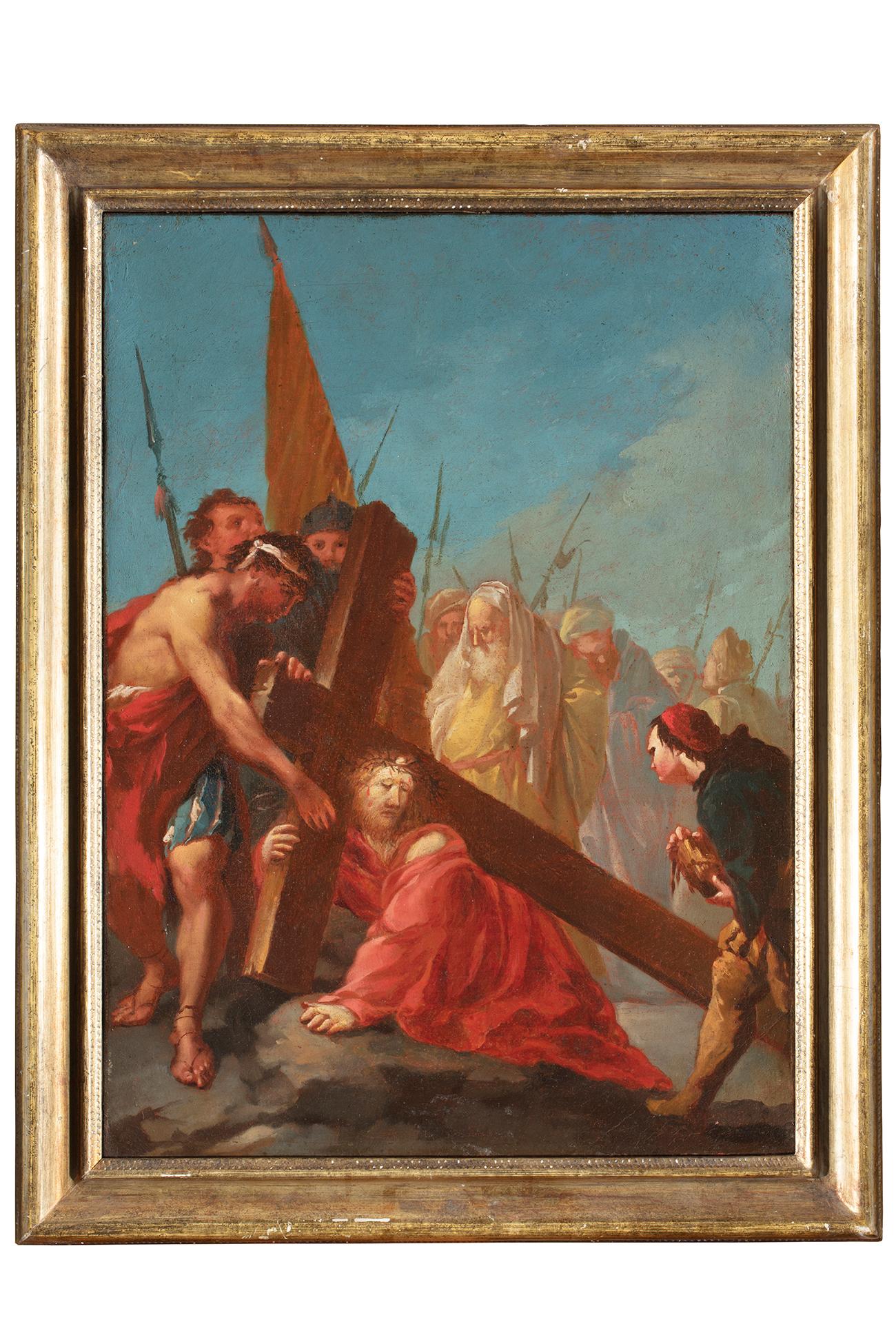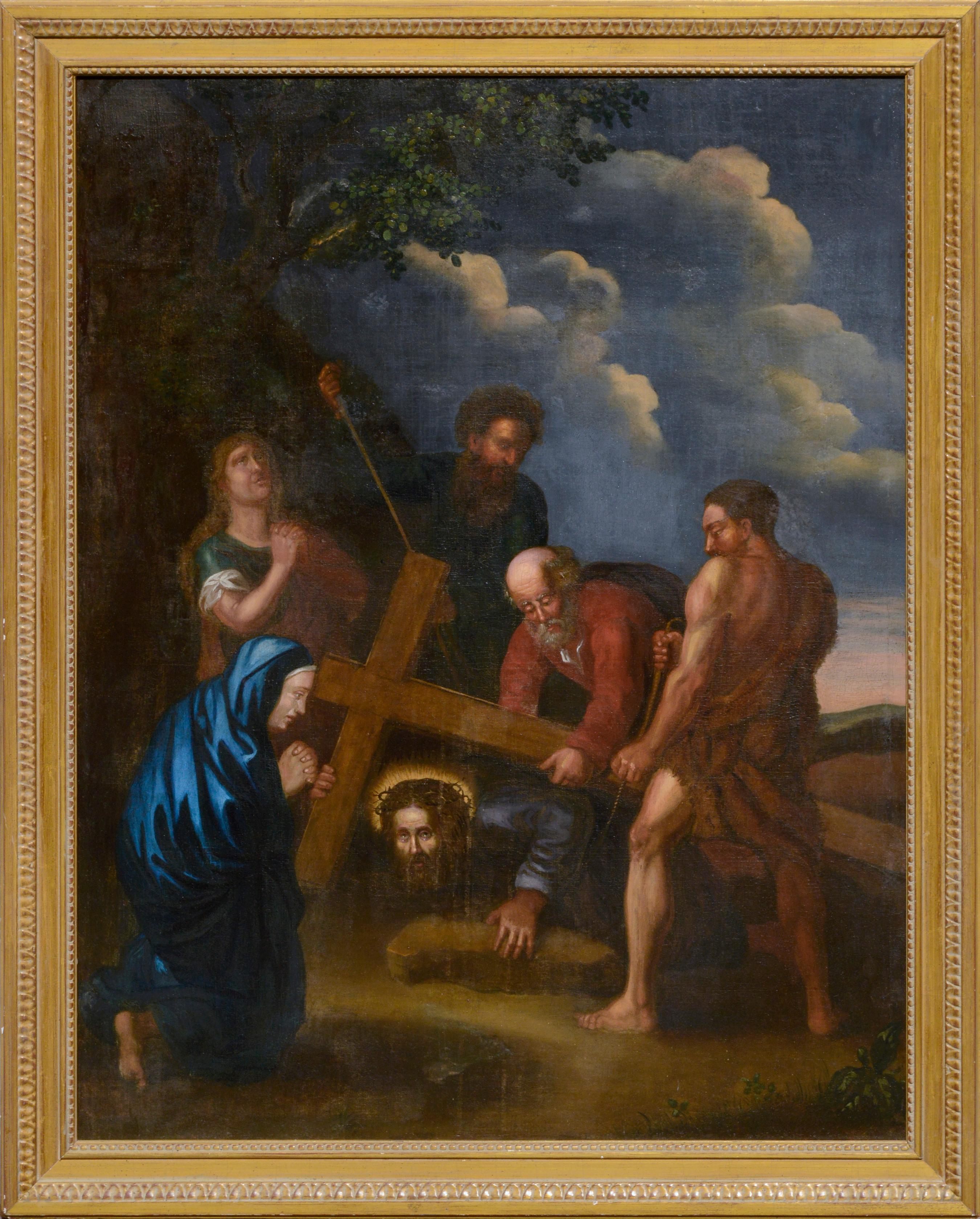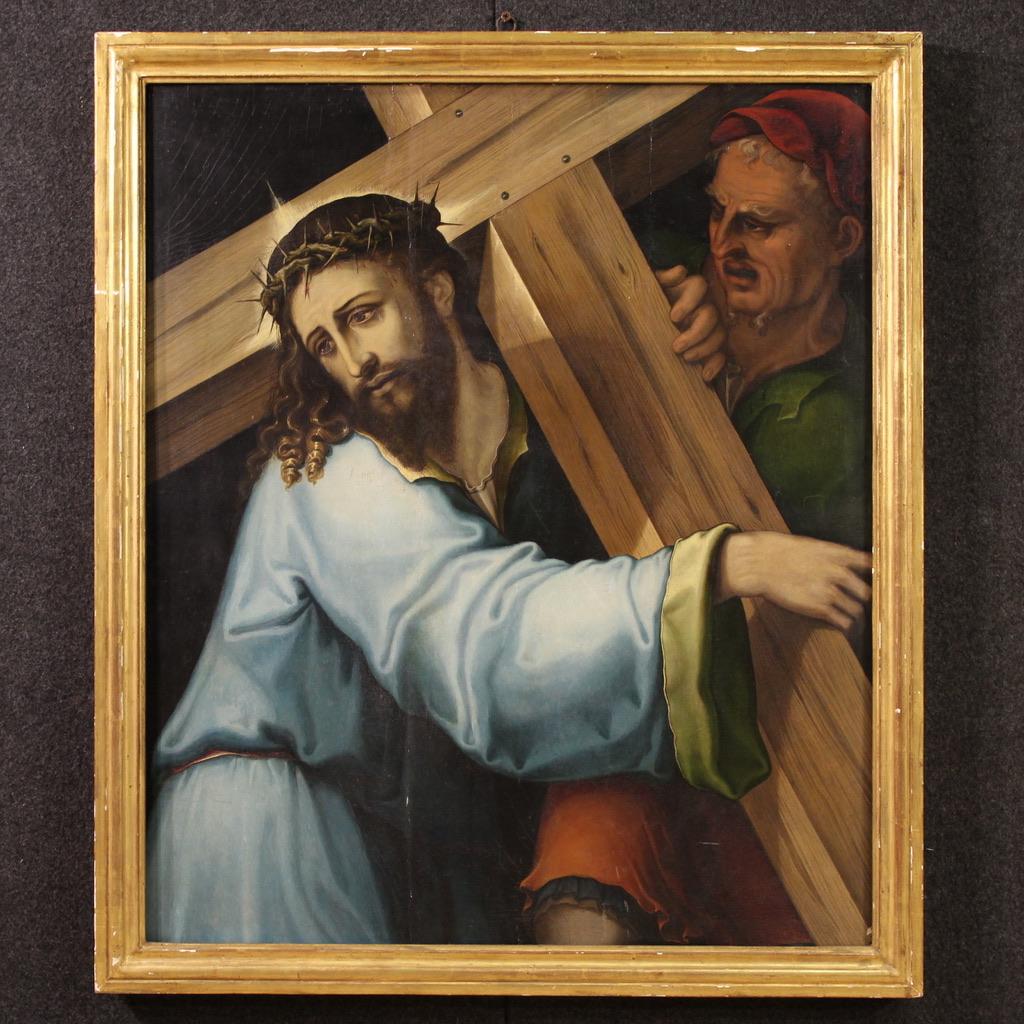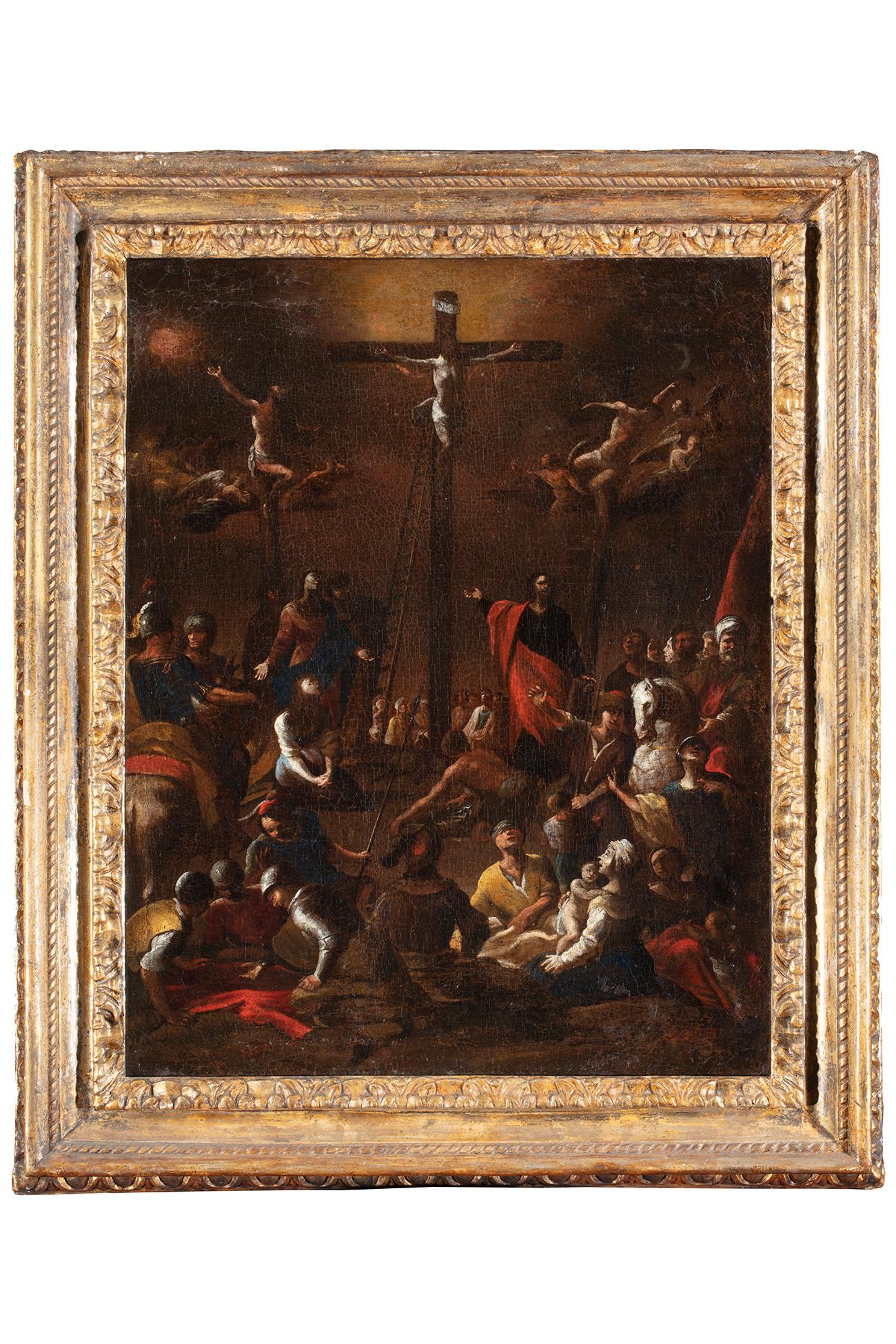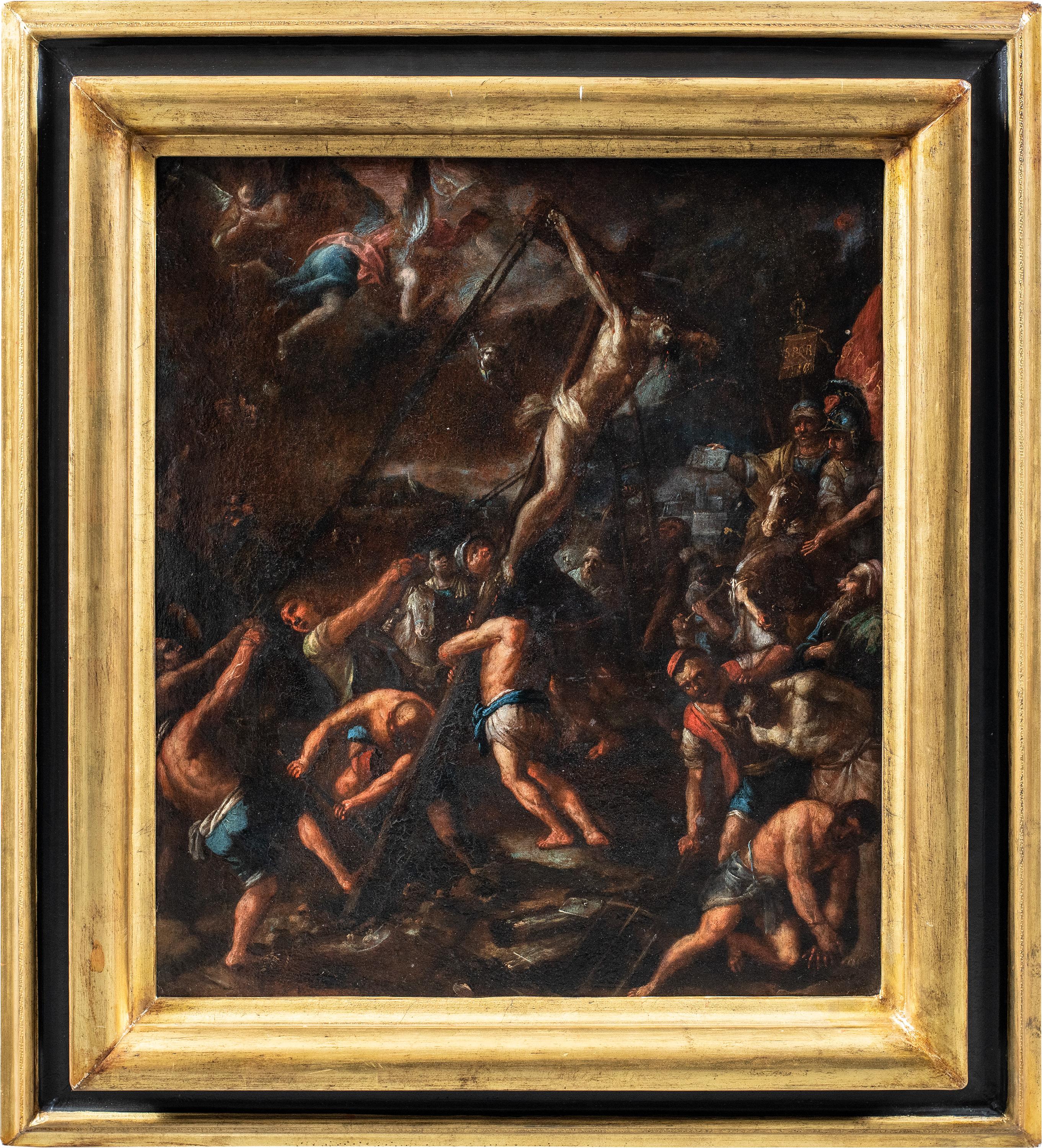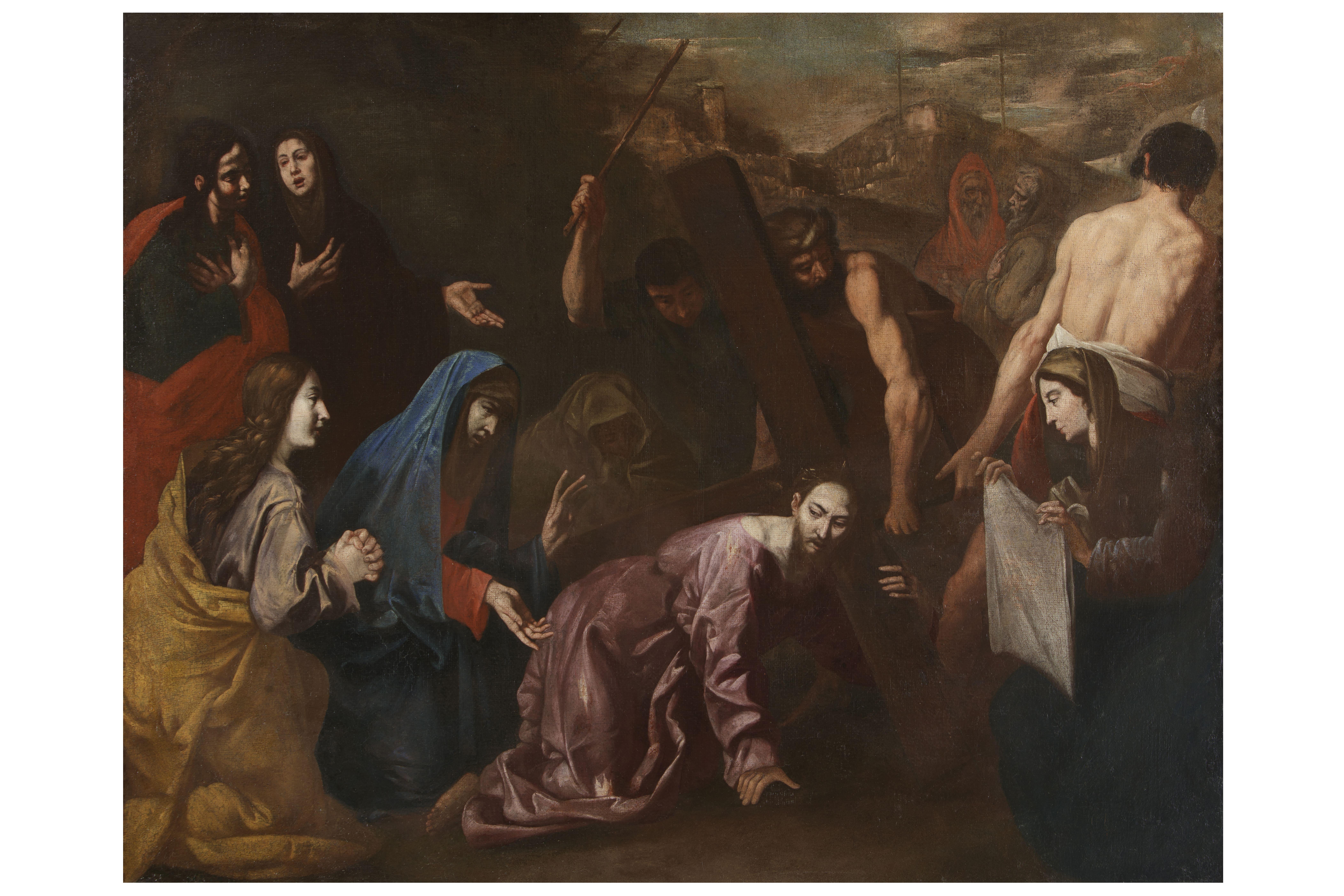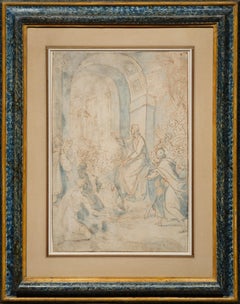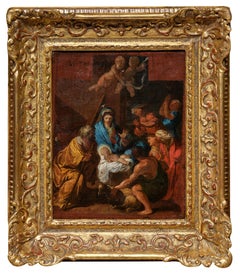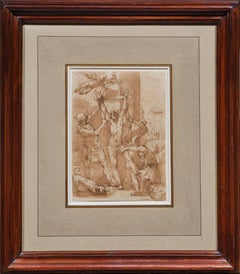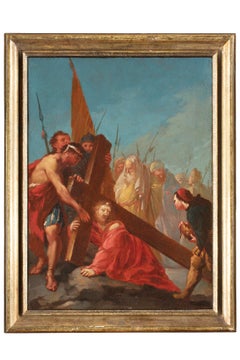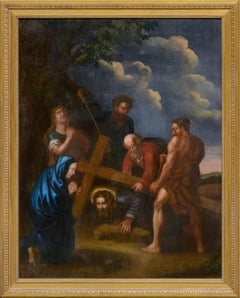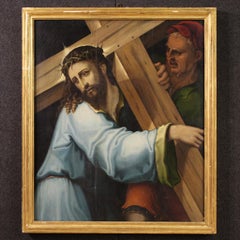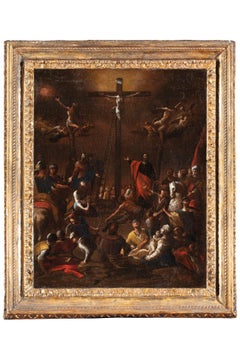Items Similar to Christ Falling on the Way to Calvary, a painting by Carlo Francesco Nuvolone
Video Loading
Want more images or videos?
Request additional images or videos from the seller
1 of 15
Carlo Francesco NuvoloneChrist Falling on the Way to Calvary, a painting by Carlo Francesco Nuvolone1640-1650
1640-1650
$83,159.41
£62,384.77
€70,000
CA$115,140.18
A$125,137.61
CHF 67,062.32
MX$1,519,392.85
NOK 841,926.77
SEK 780,759.12
DKK 533,270.08
About the Item
This painting by Carlo Francesco Nuvolone, the great Lombard master of the mid-seventeenth century, is striking for its dazzling composition and the brilliant colors of Christ's tunic. While the composition is still very much inspired by the great Lombard painters who preceded him, Christ's face reveals the influence of Guido Reni, who earned Nuvolone the nickname "Guido of Lombardy".
1. Carlo Francesco Nuvolone
Carlo Francesco Nuvolone was born in Milan into a family of artists. He first studied with his father, Panfilo Nuvolone, a painter from Cremona who painted many religious works in a late Mannerist style, as well as still lifes.
After being trained by his father, Carlo Francesco studied from 1625 at the Accademia Ambrosiana in Milan, where he was a pupil of Giovanni Battista Crespi, known as "Il Cerano" (1573 - 1632). In Il Cerano's studio, he met Pier Francesco Mazzuccheli, known as "Il Morazzone" (1573 - 1626) and Giulio Cesare Procaccini (1574 - 1625), from whom he learned the delicate work of light and shadow and the careful study of facial expressions. He also befriended Daniele Crespi (1598 - 1630), a painter of his generation who died in the plague epidemic of 1630. Alongside these Lombard painters, all of whom died rather early in Nuvolone's life, the influence of Guido Reni (1575 - 1642) from Bologna was also decisive.
Nuvolone soon became a more renowned artist than his father, and is now considered one of Lombardy's leading painters of the mid-17th century, both for his religious works and his portraits. A painting in the Pinacoteca di Brera in Milan (traditionally dated 1649 - 10th picture in the Gallery) shows him with his family including his brother Giuseppe, who was also a painter and who assisted him in the production of this painting, and bears witness to his success.
2. Description of the painting and comparison with other artworks by the painter
Nuvolone's image synthesizes the third, fourth and fifth Stations of the Cross: Christ falls for the first time under the weight of the cross, as he meets his mother, while Simon of Cyrene is summoned to help him. To our knowledge, this painting is the only representation of this theme in Nuvolone's work.
This painting, with its almost square dimensions (128 x 116 cm), has a compositional power that is unusual for the artist. It is structured by the shape of the cross, which delimits four autonomous spaces of unequal dimensions. In the largest of these, corresponding to the lower left-hand corner, the vivid colors of Christ's tunic are displayed: blue and orange, a color combination frequently found in the painter's work, whose glazed treatment lends a great deal of transparency and fluidity.
Two groups of four figures, each with interlocking faces, oppose each other on the upper level. In the upper left-hand corner, cast into the shadows, three men - a soldier, a Jew from Jerusalem, and a young man whose face is only sparingly sketched directly onto the brown preparation of the canvas – are represented behind an executioner dressed in a striped smock who, with his right hand, is holding the rope tied around Christ's neck.
The vigorous workmanship of this group of men is reminiscent of the artist's early works. The executioner and the glare of the soldier's helmet at his side evocate the Martyrdom of a Saint in the Louvre (11th picture in the Gallery).
In the lower right-hand corner, a group of four women in delicate colors stands in contrast to this violent group of men emerging from the shadows. In the foreground, the Virgin Mary is depicted in a pamoison, her hands reaching out for an ultimate protection. With great delicacy, a young blonde woman, probably Marie-Magdeleine, leans towards her in a gesture of comfort. Behind a third veiled woman with a compassionate gaze, a very slightly sketched female face appears, like a counterpart to the young man depicted behind the group of the three main male faces.
This group of four women, clearly different in style from the group of male heads, is painted over a section that had been left in reserve and which also includes the head of Christ. It is likely that the painter made a compositional change, to which we will return later, adding this group at a later stage, which would explain the difference in scale between these four heads and that of Christ. It should also be noted that Nuvolone had initially painted a shorter crossbeam, and it is easy to see that this was enlarged after the group of four women in our painting had been completed, partially hiding the Virgin's hands.
A halo remains between the landscape in the background and the group of four women. The rationale for the persistence of this halo is perhaps both symbolic and psychological: as Christ's vision blurs, as if in a daze, his field of vision narrows, and only the loving vision of his mother remains.
The central axis superimposes the head of Christ, already resting on the crosspiece as if anticipating the crucifixion, onto that of Simon of Cyrene, depicted as an elderly man who may evoke the traditional images of Saint Joseph. The opposition between the two hands, Simon de Cyrène's wrinkled hand supporting the top of the crossbeam and the Christ's clenched hand gripping the crossbeam, seems to us to be one of the most remarkable part of this painting.
3. Guido Reni's influence
The face of Christ is one of the most moving elements of this painting. This face appears to us to be strongly influenced by Guido Reni's Christic works, of which the Fitzwilliam Museum's Ecce Homo (circa 1639 - 12th picture in the Gallery) is one of the finest examples.
4. A composition of complex genesis
To explain the compositional evolution of our painting, and particularly the lengthening of the crossbeam, we thought it would be interesting to compare it with a small panel painted by Il Morazzone around 1610-1617 for the Rosary chapel in the church of San Vittore in Varese: Christ and Saint Veronica (last picture in the Gallery.
Looking at Morazzone's painting, it seems interesting to formulate the following hypothesis, which could explain the chaotic layout of this composition. Nuvolone, inspired by Morazzone's composition, would have initially left in reserve a sinuous shape which a character (probably St. Veronica or the Virgin) was to occupy. As in Morazzone's painting, this character was to hide the bottom of the cross, which would therefore have been left unpainted.
In the end, this character was not painted, and the project changed, leading to the installation of a group of four women, which, as we have seen, echoes with to the group of four male figures. Once in place, the artist had to lengthen the cross arm, which was now standing in front of the four women, partially concealing the Virgin's hands.
5. Framing
We are presenting this painting in a very sober 18th century Italian moulded frame in carved and gilded wood.
- Creator:Carlo Francesco Nuvolone (1608 - 1661)
- Creation Year:1640-1650
- Dimensions:Height: 60.63 in (154.01 cm)Width: 55.88 in (141.94 cm)
- Medium:
- Movement & Style:
- Period:1640-1649
- Condition:50 3/8” x 45 7/8” (128 x 116 cm) - Framed: 60 5/8” x 55 7/8” (154 x 142 cm) Italian frame in carved and gilded wood - 18th century The attribution to Carlo Francesco Nuvolone was confirmed in a letter from Prof. Lucio Anelli dated February 10, 2007.
- Gallery Location:PARIS, FR
- Reference Number:1stDibs: LU1568216172042
About the Seller
5.0
Vetted Professional Seller
Every seller passes strict standards for authenticity and reliability
Established in 2020
1stDibs seller since 2021
10 sales on 1stDibs
Typical response time: <1 hour
- ShippingRetrieving quote...Shipping from: PARIS, France
- Return Policy
More From This Seller
View AllA large drawing by Il Cigoli depicting Christ's Entry into Jerusalem
Located in PARIS, FR
This large sheet, delicately enhanced with blue ink wash, was created by Lodovico Cardi, known as Il Cigoli, the most prominent painter in Florence at the end of the 16th century. It...
Category
16th Century Old Masters Figurative Drawings and Watercolors
Materials
Paper, Chalk, Ink, Pen
A first thought for Nicolas Loir's Adoration of the Shepherds at the Louvre
Located in PARIS, FR
In an intimate atmosphere dominated by warm colors, Nicolas Loir offers us here a first thought, tightly focused and rigorously arranged, of the Adoration of the Shepherds in the Louvre Museum, in which he expresses his admiration for the art of Nicolas Poussin.
1. Nicolas Loir, a 17th-century Parisian artist inspired by Bourdon and Poussin
Nicolas Loir was born in Paris in 1623. His father, a goldsmith, first placed him with Simon Vouet and then with Sébastien Bourdon. At the age of 23, in 1647, he left for Rome, where he stayed for two years, drawing inspiration from the classicism of Raphael and, above all, Nicolas Poussin, whom he met and deeply admired.
On his return to France in 1649, he received his first major commissions for religious paintings for Parisian churches, the most prestigious of which was the May of Notre Dame for the year 1650. He also received numerous secular commissions for hotels and châteaux in the Paris region. Admitted to the Academy in 1663, he joined Le Brun's team and participated in the decoration of the royal castles of Vincennes, the Tuileries, and Versailles. Appointed professor at the Academy in 1666, then assistant to the rector in 1668, he died in 1679.
He married Marguerite Cotelle, daughter of the painter Jean I Cotelle, a specialist in monochrome paintings, and sister of the painter Jean II Cotelle. Dezallier d'Argenville, who owned several of his drawings, tells us that he was a man of gentle and modest temperament, deeply honest, and highly esteemed by his contemporaries, including as a portrait painter. We can see his amiable character features reflected in his portrait by Jean Tiger, which is kept at the Palace of Versailles (4th photo in the gallery).
2. Description of the painting and related artworks
Our painting depicts the adoration of the Holy Child, presented in the center of the composition on a pristine white cloth that catches the eye, by the shepherds. While the figure draped in yellow on the left is likely Saint Joseph, the Virgin Mary is depicted from the front, contemplating the Child with her right hand raised, her fingers spread as if to indicate her amazement at the realization of this Mystery. The five figures on the left, all dressed quite simply, are the shepherds who have come to worship the Child, as evidenced by the kid goat lying at his feet. Two cherubs carrying phylacteries fly in the sky and complete the composition.
Our Nativity was painted in oil on canvas coated with a brown-red preparation, visible in the two upper corners left unpainted, which is typical of French painting in the mid-17th century and found in the work of Nicolas Poussin. The overall atmosphere of the painting reveals Poussin's decisive influence, whether through the color palette dominated by primary colors (the blue of the Virgin's cloak, the orange-red of the shepherds' cloaks on the right, the bright yellow of St. Joseph's cloak on the left), the rather tubular treatment of the figures, but also through numerous direct references to Poussin's paintings. Examples include the two cherubs, which seem to be inspired by those above the Martyrdom of Saint Erasmus...
Category
Mid-17th Century Old Masters Figurative Paintings
Materials
Canvas, Oil
The Martyrdom of Saint Bartholomew, a preparatory drawing by Alessandro Casolani
Located in PARIS, FR
This powerful pen and brown ink wash drawing is a study for an altarpiece depicting The Martyrdom of Saint Bartholomew. Signed and dated 1604, it was painted at the end of his life b...
Category
Early 1600s Old Masters Figurative Drawings and Watercolors
Materials
Ink, Pen
From Renaissance Venice to Barocco Naples, a drawing by Francesco La Marra
Located in PARIS, FR
This vigorous drawing presents a brilliant synthesis between the Venetian tradition of Titian, of which it is a distant echo, and the Neapolitan Baroque of Solimena, which strongly i...
Category
Mid-18th Century Old Masters Figurative Drawings and Watercolors
Materials
Paper, Ink, Felt Pen
Studies for the Judgment of Solomon, a double-sided drawing by Simone Cantarini
Located in PARIS, FR
In this double-sided red chalk study, Simone Cantarini offers us a double reflection on the theme of the Judgment of Solomon. This sheet reveals his precise style and his sense of de...
Category
1640s Old Masters Figurative Drawings and Watercolors
Materials
Chalk, Laid Paper
Macbeth and the Three Witches a Painting on Panel by Francesco Zuccarelli
By Francesco Zuccarelli
Located in PARIS, FR
This painting, created during Zuccarelli's stay in England, represents the decisive moment when Macbeth, together with Banquo, meets the three witches who announce that he will be Ki...
Category
1760s Old Masters Landscape Paintings
Materials
Oil, Wood Panel
You May Also Like
18th Century By Giustino Menescardi Ascent to Calvary Oil on Canvas
Located in Milano, Lombardia
Giustino Menescardi (Milan, Italy, c. 1720 - Venice, Italy, after 1779)
Title: Ascent of Calvary
Medium: Oil on canvas
Dimensions: without frame 47 x 36 cm - with frame 57 x 43 cm
Shaped and gilded wooden cassetta frame
Publications:
Bozzetti, modelletti, sketches: dalla collezione di Giorgio Baratti...
Category
Early 18th Century Old Masters Landscape Paintings
Materials
Cotton Canvas, Canvas, Oil
Christ Falls on the Way to Calvary, Dutch-Italianate School, c.18th-19th Cent.
Located in Soquel, CA
Expressive depiction of Christ being aided by Simon of Cyrene by an unknown artist, Italiante School style of 17th-century Northern European painters principally Dutch, c.1700s-1800s. This piece is composed of oil on linen, laid down on fiberboard. Presented in a giltwood frame. Image size: 42"H x 33"W.
Italianate painters, group of 17th-century northern European painters, principally Dutch, who traveled in Italy and, consciously adopting the style of landscape painting that they found there, incorporated Italian models and motifs into their own works. Chief among the Italianates were Bartholomeus Breenbergh, Andries and Jan Both, Nicolaes Berchem, and Jan Asselijn...
Category
18th Century Romantic Figurative Paintings
Materials
Linen, Oil, Fiberboard
$7,600 Sale Price
20% Off
17th Century Oil on Panel Italian Religious Painting Christ Carrying the Cross
Located in Vicoforte, IT
Splendid Italian painting from the first half of the 17th century. Oil on panel artwork of remarkable pictorial quality depicting Christ carrying the cross. The subject found particu...
Category
1650s Figurative Paintings
Materials
Wood, Oil
17th Century by Scipione Compagno Crucifixion Oil On Canvas
Located in Milano, Lombardia
Scipione Compagno (active in Naples in XVII century)
Title: Crucifixion
Medium: Oil on canvas
Dimensions: without frame 64 x 52.5 cm - with frame 80 x 67 cm
Antique wooden cassetta frame carved, sculpted and gilded by Mecca technique
Not signed
Expertise by Nicola Spinosa, art historian
Publications: Bozzetti, modelletti, sketches: dalla collezione di Giorgio Baratti...
Category
Late 17th Century Italian School Landscape Paintings
Materials
Canvas, Cotton Canvas, Oil
$17,050 Sale Price
22% Off
Baroque Florentine painter - 17th century figure painting - Crucifixion
Located in Varmo, IT
Tuscan Master (17th century) - Raising of the Cross.
52 x 45.5 cm without frame, 69 x 62.5 cm with frame.
Antique oil painting on panel, in a carved, gild...
Category
Late 17th Century Baroque Figurative Paintings
Materials
Oil, Panel
$4,751 Sale Price
20% Off
17th Century By Agostino Beltrano The Procession to Calvary Oil on Canvas
Located in Milano, Lombardia
Agostino Beltrano (Naples, Italy, 1607 - 1665)
Title: The Procession to Calvary
Medium: Oil on canvas
Dimensions: without frame 98 x 122.5 cm - with frame 118 x 142.5 cm
Beautiful or...
Category
Early 17th Century Old Masters Figurative Paintings
Materials
Canvas, Oil
More Ways To Browse
Paintings Of The Virgin Mary
Antique Work Light
Christ Cross
Oil Still Life Italian Oranges
17th Century Oil On Panel Portrait
18th Century Italian Religious Paintings
Stations Of The Cross
17th Century Portrait Of Women
Antique Rosaries
18th Century Of Female Portraits
Religious Stations Of The Cross
Head Of Christ
Procaccini Giulio Cesare
Daniele Crespi
St Veronica
Saint Veronica
John Golding Painting
John Julian
